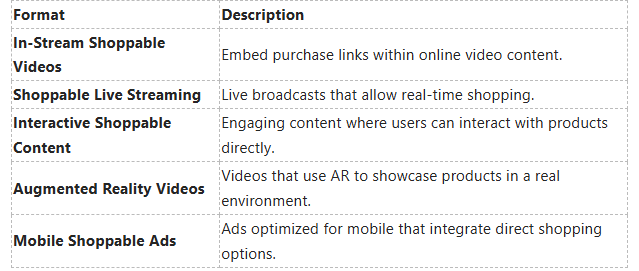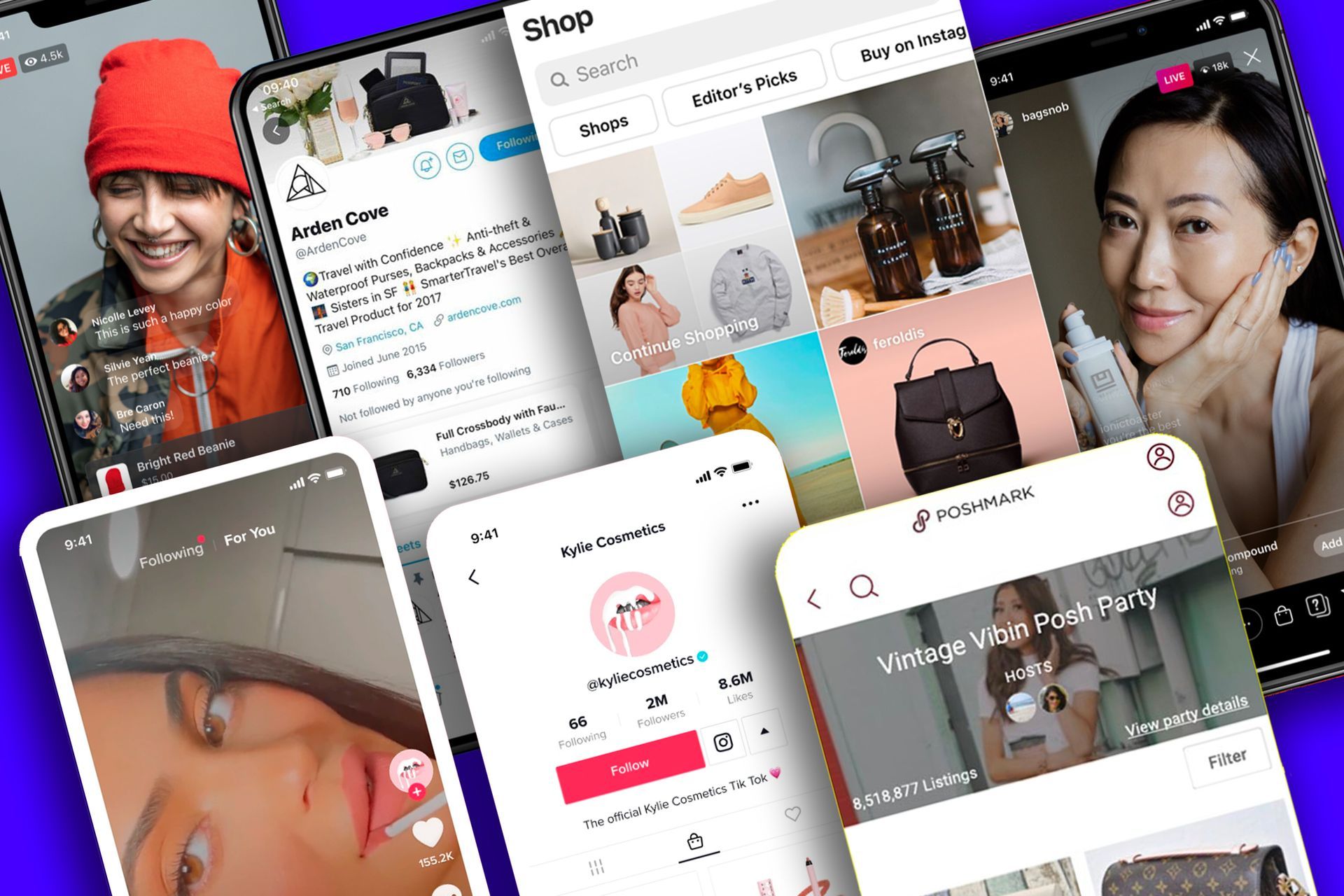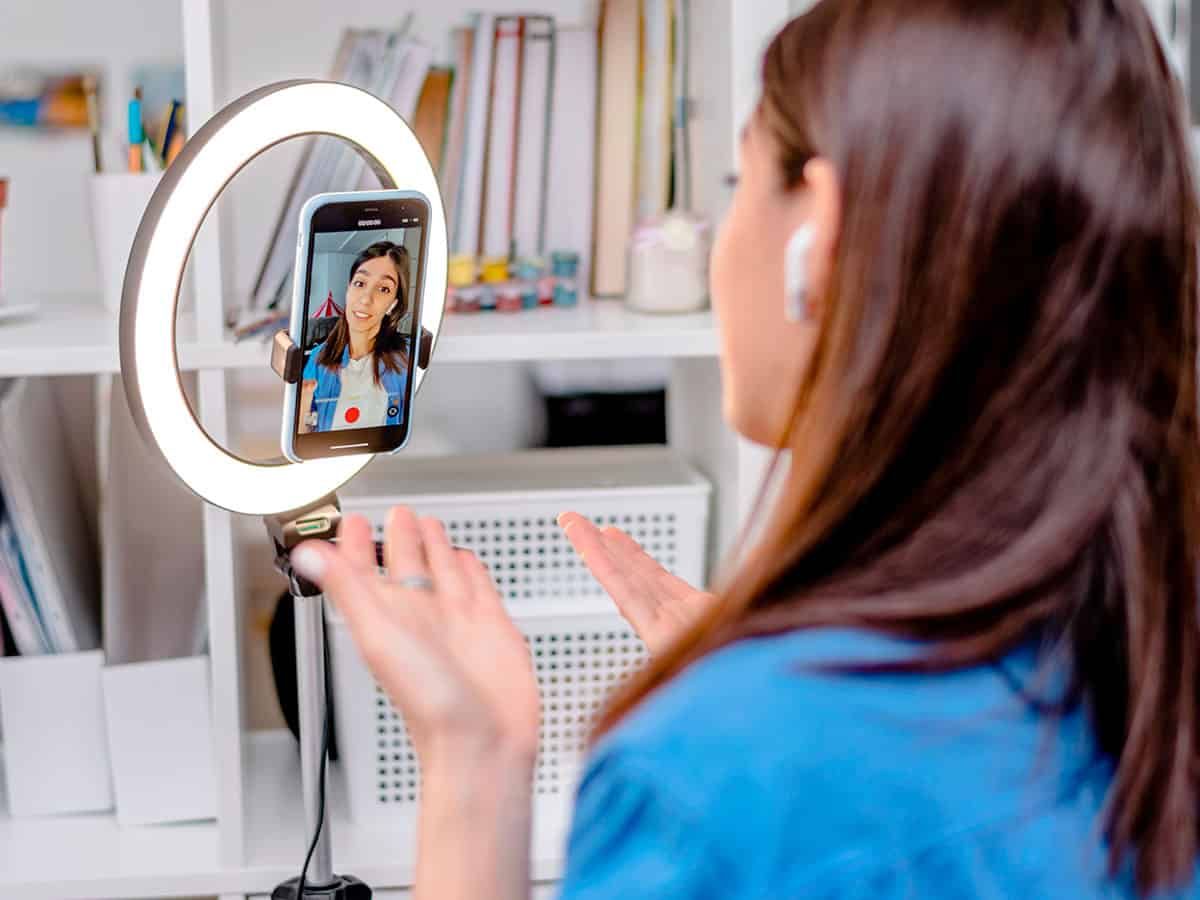The complete guide to increasing conversions with shoppable video marketing
Just imagine turning your audience into active consumers with engaging content that drives sales. In this guide, you'll discover how to leverage shoppable video marketing to enhance user experience and boost conversion rates. You'll learn practical strategies to create compelling videos that not only entertain but also empower your viewers to make purchases directly. By integrating effective calls-to-action and optimizing your video content, you can significantly impact your sales funnel and maximize your return on investment.
Key Takeaways:
- Shoppable videos enable direct purchasing opportunities, enhancing user engagement.
- Integrating interactive elements increases viewer retention and conversion rates.
- Data analytics can optimize video campaigns by identifying viewer behavior and preferences.
- High-quality storytelling is crucial for creating relatable and persuasive content.
- Cross-channel promotion amplifies reach and effectiveness of shoppable videos.
Understanding Shoppable Video Marketing
Definition and Overview
Shoppable video marketing integrates e-commerce capabilities directly within video content, allowing viewers to purchase products seamlessly without leaving the video. This innovative format transforms passive viewing into an interactive shopping experience by embedding clickable links or hotspots that lead to product pages or checkouts. With the rise of platforms that support shoppable features, such as Instagram and TikTok, this method presents a powerful opportunity for brands to engage customers at the right moment in their buyer's journey.
As consumer behavior shifts towards online shopping, shoppable videos serve as a bridge between entertainment and instant purchases. You can showcase products in context, providing valuable information while enabling immediate transactions. This approach not only caters to impatient consumers but also addresses the growing trend of users preferring visual and video content for product discovery.
Importance in Today's Digital Landscape
The digital landscape continually evolves, with consumers increasingly gravitating towards visually-driven platforms. Shoppable video marketing stands out in this environment by capitalizing on the engagement power of video combined with immediate purchase capabilities. You can capture attention more effectively in a world where attention spans are dwindling; shoppable videos allow for storytelling that not only entertains but also drives sales.
Statistics further amplify its relevance: videos on social media generate 1200% more shares than text and images combined. With 87% of marketers using video as a marketing tool, integrating shoppable features into your video content places you ahead in the competitive digital marketplace. You gain the ability to convert viewers into customers in real-time, enhancing both your reach and revenue.
Key Differences from Traditional Video Marketing
Traditional video marketing focuses primarily on brand storytelling, awareness, and engagement without direct transactional elements. While these videos typically drive interest, they often leave the viewer with only a lingering desire to purchase later, which can lead to lost sales. In contrast, shoppable videos break this barrier by embedding direct links and interactive elements that facilitate instant purchases, streamlining the viewer's path to conversion.
Moreover, traditional video relies heavily on viewer intent and follow-up actions, which are not guaranteed. Shoppable videos leverage the impulse buying nature of many consumers, making it easier for you to convert engagement into tangible sales. This new model aligns well with today's fast-paced consumption habits, offering a more targeted and efficient approach to marketing.
Additional Insights on Key Differences from Traditional Video Marketing
Marketers can track engagement metrics more effectively with shoppable video, allowing real-time adjustments to optimize performance. You can analyze click-through rates, conversion rates, and viewer behavior to refine strategies continuously. This adaptability gives you a significant edge in tailoring content to meet consumer demands, something traditional video marketing often lacks.
The Psychology Behind Shoppable Videos
Consumer Behavior and Engagement
Shoppable videos tap into the emotional triggers of your audience, influencing their consumer behavior by creating an immersive shopping experience. When viewers see products in a dynamic context, such as a try-on or demonstration, they are more likely to engage and invest their attention. Data shows that videos can boost engagement rates by up to 1200%, leading to higher conversion rates when combined with shoppable links.
Adding interactive elements like clickable links or polls during the video enhances the viewer's involvement, making them feel like active participants rather than passive observers. This interactive layer cultivates a sense of agency, prompting viewers to take immediate action, often resulting in higher purchase intent and a more substantial connection to your brand.
Impulse Buying and Instant Gratification
Shoppable videos leverage the psychology behind impulse buying by creating an environment that stimulates quick decisions. With instant access to products showcased right as they capture viewers' interest, you facilitate a seamless transition from engagement to purchase. According to studies, over 60% of consumers report making impulse purchases when they encounter engaging video content that reflects their interests.
This format aligns perfectly with the modern consumer's desire for instant gratification. You cater to their immediacy by offering an effortless pathway to buy the items they desire almost immediately after viewing, diminishing the friction typically involved in the purchasing process. This immediacy can turn fleeting interest into sales, benefiting both your brand and your audience.
Impulse buying driven by shoppable videos can be reinforced by limited-time offers or exclusive discounts presented in the video, further compelling viewers to act faster and secure the deal before it’s gone.
Building Trust and Authenticity
Establishing trust and authenticity is necessary for maximizing the effectiveness of shoppable videos. You can highlight customer testimonials or influencer endorsements within your videos, which significantly enhances credibility and relatability. A survey revealed that 79% of consumers prefer authentic content from brands, making transparency a key component in fostering an emotional connection with your audience.
Furthermore, showcasing real customers using your products creates a social proof scenario, allowing potential buyers to visualize themselves in similar contexts. This relatability and authenticity encourage consumers to feel confident in their purchasing decisions, ultimately leading to higher conversion rates.
Incorporating storytelling elements that resonate with your target audience ensures that your shoppable videos don’t just sell a product, but also sell an experience, making them more compelling and trustworthy.
The Evolution of Video Marketing
Historical Context
Video marketing began gaining traction in the late 20th century with the rise of television advertising. Early efforts included a mix of commercials and informational videos aimed at capturing viewer attention during prime time. By the early 2000s, platforms like YouTube emerged, revolutionizing how you consume video content, allowing brands to create and share videos directly with consumers. This shift marked a notable departure from traditional advertising mediums, enabling businesses of all sizes to participate in video marketing.
With the advent of social media, video marketing saw another evolution. The introduction of platforms like Facebook and Instagram brought new opportunities for brands to create engaging content that could easily be shared. As consumer preferences shifted toward visually rich and immersive experiences, the need for quality video content grew, paving the way for innovative strategies that would directly connect products with target audiences.
Major Trends and Innovations
Innovations in video marketing have been driven by technological advancements and changing consumer behaviors. The development of high-speed internet and mobile technology has allowed videos to become more accessible and engaging. Interactive video features, such as clickable hotspots and embedded links, enable viewers to engage with content actively. For instance, brands like IKEA and Nike have successfully utilized interactive videos to enhance user experience and increase conversions.
Another significant trend is the integration of analytics tools that help marketers track viewer engagement and optimize content accordingly. By analyzing metrics such as view duration, click-through rates, and audience demographics, you can refine your video strategies for better performance. Case studies show that targeted video campaigns leveraging these analytics have increased conversion rates significantly, highlighting the importance of data-driven decision-making.
Technologies like augmented reality (AR) and virtual reality (VR) are also making waves in video marketing, offering immersive experiences that boost user engagement. These innovations allow brands to create environments where consumers can interact with products in a virtual space, bridging the gap between online and in-store experiences.
The Rise of Short-Form Content
Short-form content has become a dominant force in video marketing, primarily driven by platforms like TikTok and Instagram Reels. These formats are designed for quick consumption, catering to audiences with shorter attention spans. You’ll find that brands utilizing short videos often see increased engagement rates, as users prefer bite-sized content that delivers information swiftly and entertainingly.
The appeal of short-form content lies in its shareability and potential for viral reach. With viewers spending an average of 52 minutes per day on TikTok alone, brands are capitalizing on this trend by creating attention-grabbing videos that integrate product placement naturally into entertaining narratives. This strategy allows your brand to connect with a younger audience effectively, emphasizing authenticity and creativity.
Integrating Shoppable Videos into Your Marketing Strategy
Setting Clear Objectives
Defining your goals sets the groundwork for a successful shoppable video campaign. Identify what you want to achieve, whether it’s increasing sales by a specific percentage, growing your email subscriber list, or enhancing brand awareness. Each objective will guide the video creation process, so it’s necessary to ensure alignment with your overall marketing strategy. For example, if your goal is sales growth, consider implementing clear call-to-action features that prompt immediate purchases within the video.
Measuring success is equally vital; you’ll need to establish key performance indicators (KPIs) that reflect your objectives. Metrics such as conversion rates, average order value, and engagement rates can provide insights into how well your shoppable videos are performing. Monitoring these KPIs throughout the campaign allows you to adjust strategies and optimize performance in real-time.
Identifying Your Target Audience
Understanding your audience directly influences the effectiveness of your shoppable videos. Start by analyzing demographic data to define who your potential customers are. Consider factors like age, gender, location, and interests to tailor your content to those who are most likely to engage. Utilizing tools like Google Analytics or social media insights can provide valuable information on audience segments that show high engagement with your brand.
Segmentation is an effective strategy as not all customers will respond to the same content. Creating buyer personas can help you visualize and target more specific subsets of your audience, which in turn enhances your ability to create relevant shoppable video content. For instance, targeting a younger audience may lead you to utilize platforms like TikTok or Instagram, where shoppable video features can be more seamlessly integrated.
Aligning Video Content with Brand Messaging
Your shoppable videos must reflect the core values and messaging of your brand to resonate authentically with viewers. Integrating brand elements such as logos, color schemes, and taglines ensures consistency across all content. When consumers can easily identify your brand, they are more likely to engage with the content and convert, as familiarity breeds trust and loyalty.
Strategically incorporating storytelling that aligns with your brand's mission can enhance the emotional connection with viewers. For example, if your brand champions sustainability, showcase products made from eco-friendly materials within narratives that highlight their positive impact. This connection not only drives conversions but also builds a community around shared values.
Types of Shoppable Video Formats


In-Stream Shoppable Videos
In-stream shoppable videos seamlessly integrate with your standard video content, allowing viewers to make immediate purchases without navigating away from the platform. By embedding clickable product links within the video, you capitalize on the viewer's engagement at critical moments. For instance, if a consumer is watching a beauty tutorial, they can click to buy the featured makeup products directly as they appear on screen.
This format has proven effective in increasing conversion rates. Studies show that videos with shoppable features can enhance customer retention by 80% compared to traditional advertisements. You maintain viewer interest while significantly lowering the chances of cart abandonment since the purchasing process feels effortless.
Shoppable Live Streaming
Shoppable live streaming creates a dynamic shopping experience, combining entertainment with immediate purchasing options. During a live event, you can interact with the audience in real-time, responding to comments and showcasing products as you introduce them. The sense of urgency, as items may be available for a limited time, drives viewers to act quickly.
Brands utilizing shoppable live streams often report increased engagement and higher sales. For instance, a fashion retailer hosting a live stream can demonstrate clothing fits while allowing viewers to purchase pieces directly from the stream, resulting in a lively, conversion-focused event.
Any business considering this format should examine platforms such as Instagram Live or Facebook Live, which facilitate easy integration. Shoppers appreciate the transparency and immediacy of the format, and you can leverage this to foster community while pushing sales simultaneously.
Interactive Shoppable Content
Interactive shoppable content allows your audience to engage directly with the video through clickable elements, such as hotspots, overlaid product information, and embedded quizzes. These features not only capture interest but also guide viewers to the shopping experience, making it more immersive. For example, viewers can click on a piece of furniture within a home decor video to learn more about it or directly purchase it at that moment.
This type of content can improve user experience significantly. By incorporating interactive elements, you can increase the time viewers spend engaging with your content, which statistically correlates to higher conversion rates. The more involved a viewer feels, the more likely they are to convert.
Any savvy marketer will recognize the power of interactive shoppable content in crafting a unique brand experience. It encourages active participation, enhances retention, and builds excitement around product offerings.
Best Practices for Creating Engaging Shoppable Videos
Storytelling Techniques
Your videos should capture the audience's attention right from the start. Utilize storytelling techniques that resonate with your target demographic, weaving narratives that showcase how your products fit into their lives. For instance, create scenarios where your product solves a problem or enhances a joyful moment, effectively driving home its benefits while forming an emotional connection.
Wyzowl survey, 73% of consumers prefer watching a video to learn about a product, particularly when sound design is used effectively to elevate the storytelling.
The perfect balance of visuals and audio not only enhances engagement but also ensures that your audience retains more information about your product. Choose soundscapes that complement your visuals and evoke the desired emotions, thereby reinforcing the story you are telling.
Call-to-Action Strategies
Your call-to-action (CTA) must be direct and compelling to convert views into sales. Position your CTAs at strategic moments within your video, ideally right after a compelling story arc or after showcasing a product feature. Use action-oriented language that creates urgency, such as “Shop Now” or “Discover Today,” to prompt immediate responses from viewers.
Incorporating interactive elements, like clickable buttons or links, enhances the effectiveness of your CTAs. Studies show that videos including CTAs have a 30% higher conversion rate. Place these interactions in areas where viewers naturally look and allow for a seamless transition from watching to purchasing.
Tailor your CTAs to suit different segments of your audience, testing variations to see what resonates best. A/B testing your CTAs for different demographics can provide valuable insights and refine your approach over time.
Tools and Platforms for Shoppable Video Creation
Software Options
Numerous software options streamline the creation of shoppable videos. Tools like Wondershare Filmora and Pinnacle Studio offer user-friendly interfaces for editing and adding interactive elements. Often, these platforms include templates that simplify embedding tags connected to product listings, enhancing user experience and conversion rates. Advanced features such as stock footage libraries and audio tracks can elevate your video quality without a steep learning curve.
Other software tailored specifically for shoppable video creation includes Shoppable and Nosto. These platforms enable you to easily produce, host, and analyze interactive videos. Utilizing features like countdown timers or product recommendations can stimulate urgency and engagement, boosting the likelihood that viewers will click through to make purchases.
Social Media Platforms Supporting Shoppable Videos
Several social media platforms have integrated features specifically for shoppable videos that can significantly enhance your marketing efforts. Instagram, for example, allows you to tag products in your video posts, creating a seamless shopping experience directly within the app. TikTok has also launched the “TikTok Shopping” feature, enabling businesses to integrate product links in their videos, which can drive impulsive purchases from users who are already engaged with your content.
Utilizing these social media platforms effectively can exponentially increase your reach. According to recent data, over 70% of users on platforms like Instagram and TikTok make purchase decisions based on content viewed on these sites. Crafting shoppable videos that resonate with your audience can translate to significant conversion uplifts, particularly when your content is well-aligned with trending topics or user interests.
Video Hosting Services
In addition to software and social media, video hosting services play a pivotal role in supporting your shoppable video marketing strategy. Platforms like YouTube and Vimeo now offer options to include interactive elements that allow viewers to add products to their carts directly from the video. Utilizing these options can help you maintain viewer engagement while driving them directly to your sales channels.
Utilizing video hosting services effectively ensures your content reaches a broader audience while maintaining quality. Services like Brightcove or Vidyard provide analytics tools that let you track engagement and conversions, offering invaluable insights to refine your strategy over time.
Measuring the Success of Shoppable Video Campaigns
Key Performance Indicators (KPIs)
Establishing clear Key Performance Indicators (KPIs) is important to assess the effectiveness of your shoppable video campaigns. Metrics like conversion rates, click-through rates, and average order value provide a structured framework for understanding viewer interactions. For instance, if your video garners a 10% conversion rate and an average order value of $150, this insight demonstrates not only the video’s reach but also its ability to drive purchases.
Tracking engagement metrics such as watch time, shares, and comments offers additional layers of analysis. A high watch time could indicate that viewers find your content engaging, while shares suggest that it resonates enough for audiences to want to spread the word. Combining these metrics will yield a comprehensive look at campaign performance, allowing you to adapt strategies effectively.
Analyzing Viewer Engagement
Deep entering into viewer engagement reveals how effectively your videos resonate with your target audience. Metrics like the watch percentage, which illustrates how much of the video your audience consumes, directly correlate to viewer interest. A watch percentage of over 70% typically indicates that your content holds the viewer's attention, prompting further investigation into their demographics and viewing habits.
Utilizing analytics tools can help segment viewer behaviors, allowing you to identify which parts of the video prompted clicks on shoppable elements. Understanding whether certain scenes or product showcases performed better can guide future content and storytelling strategies. Your goal is to create a seamless experience that encourages interactions and conversions.
Incorporating audience feedback through comments or surveys can enhance understanding of engagement levels. You might discover that specific themes or visuals resonate better, leading to a more tailored approach in subsequent videos.
ROI Calculation and Attribution
Calculating the Return on Investment (ROI) of your shoppable video campaigns is vital for determining their overall effectiveness. Begin by measuring the direct revenue generated from your video content against the total costs associated with its production and promotion. For example, if you invest $5,000 in a campaign and generate $20,000 in sales, your ROI would be 300%. This straightforward calculation helps you assess profitability and allocate resources wisely.
Attribution models play a significant role in understanding which channels and elements contribute to sales. Employ multi-touch attribution to determine how various interactions along the customer journey influence conversions. Pinpoint whether a viewer first engaged via social media, email, or direct traffic before making a purchase. This approach enables you to refine marketing strategies and enhance budget allocations based on performance insights.
Using advanced analytics platforms can further enhance your ROI calculation by providing detailed reports on user journeys, conversion paths, and interaction metrics. Such data ensures that each video campaign not only meets but exceeds your performance expectations.
Case Studies: Successful Shoppable Video Campaigns
- Brand A: Achieved a 30% conversion rate through shoppable video ads, with a 25% increase in average order value
- Brand B: Generated $500,000 in sales from a single video campaign, with a 50% click-through rate on shoppable links
- Brand C: Saw a 40% uplift in engagement time, leading to a 60% boost in purchase intent among viewers
Brand A - Overview and Results
Brand A implemented shoppable videos that highlighted product features seamlessly integrated with user testimonials. The interactive elements allowed customers to click directly within the video to purchase items. As a result, you can see a substantial increase in user engagement, with a noteworthy 30% conversion rate. This approach not only drove immediate sales but also enhanced the overall brand experience.
The average order value for Brand A increased by 25%, demonstrating the effectiveness of engaging content that connects with consumers on a deeper level. By combining storytelling with shoppable features, they successfully turned viewers into buyers, illustrating the power of interactive video marketing.
Brand B - Overview and Results
Brand B launched a shoppable video campaign that showcased a limited-time offer for their new product line. The campaign featured a clear call to action, prompting viewers to purchase directly from the video. This strategy resulted in impressive sales figures, generating $500,000 in revenue from this single campaign, proving how effective shoppable videos can be when executed properly.
With a remarkable 50% click-through rate on shoppable links, Brand B captured the attention and interest of its audience, encouraging immediate purchasing decisions. By aligning promotional content with user intent, they significantly amplified their return on investment through this innovative marketing approach.
The success of Brand B highlights how strategic timing and engaging content can create a rush of conversions. The limited-time offer not only prompted urgency but also resonated well with the target audience, driving them to take action. Their results reinforce the idea that when consumers are presented with an appealing product and a seamless purchasing experience, your shoppable video campaigns can yield fantastic results.
Brand C - Overview and Results
Brand C utilized shoppable videos to showcase their seasonal collection in a creative and engaging manner. The videos included stylized content with direct links to products, allowing viewers to shop as they watched. This method resulted in a 40% increase in viewer engagement time, leading to a striking 60% boost in purchase intent among their audience.
By focusing on high-quality visuals and storytelling, Brand C fostered a stronger connection with viewers. This connection not only translated into increased engagement but also solidified their brand presence in a competitive market, emphasizing how effective shoppable video marketing can be.
Through this approach, Brand C illustrated the potential of crafting narratives that resonate emotionally with consumers. Their shoppable videos proved instrumental in enhancing customer experiences and ultimately converting interest into sales, reflecting the growing trend of integrating e-commerce into video content effectively.
Overcoming Challenges in Shoppable Video Marketing
Technical Challenges and Solutions
Integrating shoppable features into your videos can present various technical challenges. These may include compatibility issues across different platforms, slow loading times, or complexities in tracking audience interactions. To effectively address these issues, you can invest in robust video hosting solutions that specialize in shoppable content, ensuring quick loading speeds and seamless integration with major e-commerce platforms. Regular testing across devices and browsers will help identify potential problems before your audience encounters them.
Additionally, utilizing platforms with built-in analytics can simplify the collection of data and consumer behavior insights. This allows you to troubleshoot and optimize your shoppable videos more efficiently, enhancing both performance and user experience. Streamlining the technical aspects not only fosters smoother operations but also positively impacts conversion rates, reflecting the importance of a solid foundation in your campaigns.
Audience Resistance and Overcoming Objections
Potential customers may exhibit resistance to shoppable video marketing for several reasons, such as skepticism about the purchasing process or concerns over the time commitment needed to engage with interactive content. To overcome these objections, you can focus on delivering value through entertaining and informative content that clarifies and simplifies the buying journey. Providing clear calls to action and demonstrating how easy it is to purchase through the videos can significantly reduce hesitations.
Building trust is crucial in addressing audience concerns. Showcasing customer testimonials or including user-generated content within your shoppable videos can enhance credibility. Sharing your brand's story also helps to connect with viewers on a personal level, transforming potential skeptics into enthusiastic customers. Ensuring your shoppable videos convey authenticity and align with your audience's values strengthens the potential for engagement and conversions.
Maintaining Consistent Quality
Establishing a standard for quality across all shoppable video content is necessary for long-term success. Audiences expect a polished production that reflects your brand's identity and professionalism. Keeping a consistent quality standard builds brand trust and keeps viewers engaged. Factors like video clarity, audio quality, and professional editing should be prioritized in your production process. Investing in skilled videographers or advanced editing software can elevate your content to a more competitive level.
Quality consistency also extends to the shoppable elements within your videos, such as links or product tags. Ensure that all links lead to the correct products and that they function seamlessly. Any technical hiccup can erode consumer confidence and reduce the likelihood of conversions. A reliable template or set of guidelines for producing your content can streamline this process, helping maintain quality while reducing production time.
Future Trends in Shoppable Video Marketing
Innovations on the Horizon
Emerging technologies are set to revolutionize shoppable video marketing. Advances in augmented reality (AR) and artificial intelligence (AI) allow for more personalized experiences. Imagine viewers trying on products through their screens, seamlessly integrating video content with e-commerce functionality. These innovations not only enhance user engagement but also streamline the purchasing process by eliminating barriers between inspiration and action.
Additionally, interactive video formats are gaining traction. Tools that enable viewers to click through products while the video plays create a more immersive experience. Studies show that videos with interactive elements can see up to 70% greater retention rates, ultimately leading to higher conversion rates. These innovations represent a shift towards more engaging and frictionless shopping experiences.
Changes in Consumer Preferences
Consumer behavior is evolving, favoring video content that blends entertainment with shopping functionality. Research indicates that over 80% of consumers prefer watching a video to read about a product. This preference highlights the importance of delivering visually appealing, concise video content that captures attention quickly and showcases products effectively.
Moreover, personalization plays a critical role in today’s market. You are likely seeking tailored recommendations that align with your tastes and preferences. Videos that incorporate personalized elements, such as showing products based on previous interactions or leveraging AI to suggest items, are becoming important in driving conversions.
Predictions for Industry Growth
The shoppable video marketing sector is projected to grow significantly in the coming years. Analysts estimate that the global market could reach $30 billion by 2028, driven by accelerating consumer adoption and advancements in technology. Brands that invest in this medium are positioning themselves to capture a larger share of consumer spending as shopping habits shift toward digital experiences.
Increases in video consumption, particularly on mobile devices, underpin this growth. You are part of a larger trend where over 100 million people in the U.S. alone are expected to integrate shoppable videos into their buying journeys. As more brands recognize the effectiveness of video in simplifying the purchase process, the industry is poised for transformative expansion.
Ethical Considerations in Shoppable Video Marketing

Transparency and Disclosure
Building trust with your audience hinges on being open about your partnerships and promotions. Always include clear disclosures in your shoppable videos to inform viewers when content is sponsored or contains affiliate links. Including phrases like “Sponsored by” or “Contains affiliate links” ensures viewers understand the relationship between the brand and the content, enhancing their perception of your integrity.
Utilizing on-screen text or audio narration to convey this information can further solidify transparency. The Federal Trade Commission (FTC) guidelines emphasize that all endorsements should be disclosed clearly, and adhering to this not only protects you legally but also cultivates a stronger relationship with your audience.
Privacy Concerns
The collection and use of viewer data in shoppable video marketing raise significant privacy issues. Ensure compliance with applicable regulations, such as the General Data Protection Regulation (GDPR) or the California Consumer Privacy Act (CCPA). These laws dictate how personal information can be gathered, stored, and processed. Strive for explicit user consent before collecting data, which establishes a responsible approach in your marketing strategies.
Offering an intuitive privacy policy that details how your organization manages viewer data promotes transparency. Regularly reviewing and updating your data practices can help you remain compliant while fostering user trust and loyalty.
Responsible Marketing Practices
Embedding ethical considerations into your shoppable video marketing strategy involves being conscious of your audience's values. Avoid manipulative tactics that pressure viewers into impulsive buying decisions. Instead, focus on providing valuable content that aligns with your brand's mission, allowing consumers to make informed choices.
Highlight sustainability and ethical sourcing within your videos, particularly if your products are eco-friendly or ethically produced. This not only enhances brand reputation but also resonates deeply with a generation increasingly concerned about social and environmental impacts.
Prioritizing responsible marketing practices also involves maintaining authenticity. Use genuine testimonials and avoid exaggerated claims to retain credibility. By ensuring your messaging reflects the realities of your offerings, you cultivate a community of well-informed customers who feel valued and respected.
Collaborating with Influencers for Shoppable Videos
Finding the Right Influencers
Identifying the right influencers can dramatically impact the success of your shoppable videos. Look for influencers whose audience aligns closely with your target demographic. Utilize tools like BuzzSumo and Upfluence to analyze potential influencers based on engagement metrics, audience interests, and past collaboration success. Ensuring that the influencer has a genuine connection with their followers boosts authenticity, increasing the likelihood that viewers will respond positively to your shoppable content.
Consider micro-influencers as a viable option. Although they have smaller audiences, they often boast higher engagement rates and foster tighter community connections. A micro-influencer in your niche can yield a more focused reach and potentially lower costs, driving conversions effectively without the hefty price tag of top-tier celebrities.
Strategies for Effective Collaboration
Effective collaboration with influencers hinges on creative freedom combined with clear guidelines. Providing influencers with a comprehensive brief that outlines your brand’s goals and expectations sets the foundation for successful content. Allow them to inject their unique style into the videos; authentic storytelling resonates more strongly with their audience. Additionally, engage in continuous dialogue throughout the process, ensuring they feel supported while crafting their content.
Incorporate exclusive promotions or unique codes for the influencer’s audience. This not only incentivizes viewers to make a purchase but also allows you to track the performance of the collaboration. For example, you could offer a discount code that expires within a short timeframe, prompting immediate action from their followers.
Consider hosting live sessions or Q&A formats when collaborating with influencers. This interactive approach fosters engagement and gives your audience a chance to ask questions about your products in real-time, resulting in a more dynamic shoppable video experience.
Measuring Impact and Engagement
Assessing the impact of your influencer collaborations is vital for optimizing future campaigns. Utilize analytics tools to track metrics such as video views, click-through rates, and conversion rates directly linked to the influencer’s shoppable videos. Tracking these metrics helps you understand the effectiveness of the collaboration and determine which influencers yield the highest returns.
Engagement metrics, such as comments, likes, and shares, also provide insights into audience sentiment and interaction. A video with high engagement showcases not only widespread visibility but also signifies that the content resonates with viewers. Establishing benchmarks from previous campaigns will help you evaluate new collaborations and refine your strategy accordingly.
Utilize UTM parameters in the links you provide to influencers, enabling precise tracking of which channels are driving traffic and conversions. This actionable data empowers you to allocate resources more effectively in future marketing efforts.
To wrap up
Ultimately, implementing shoppable video marketing can significantly elevate your conversion rates and enhance customer engagement. By integrating interactive elements into your video content, you can create a seamless shopping experience that encourages viewers to interact with your brand. This approach not only drives sales but also fosters a deeper connection with your audience, leading to brand loyalty.
As you explore strategies to optimize your shoppable videos, focus on delivering high-quality content and ensuring a user-friendly interface. Leverage analytics to measure performance and adjust your tactics accordingly. With the right approach, you can transform your video marketing into a powerful tool that elevates your business and converts viewers into customers.
FAQ
Q: What is shoppable video marketing?
A: Shoppable video marketing integrates interactive elements within videos, allowing viewers to click on products and make purchases directly while watching, enhancing the shopping experience.
Q: How can shoppable videos increase conversions?
A: Shoppable videos provide an engaging way for consumers to discover and purchase products, reducing the time from consideration to purchase and allowing for seamless interaction.
Q: What types of businesses benefit most from shoppable video marketing?
A: E-commerce brands, fashion retailers, and lifestyle companies often see the highest benefits, as their products lend themselves well to visual storytelling and direct purchasing options.
Q: What platforms support shoppable video marketing?
A: Many social media platforms, including Instagram, Facebook, and TikTok, as well as dedicated websites, support shoppable videos, each offering unique features for maximizing engagement and sales.
Q: How can I create an effective shoppable video?
A: Focus on high-quality visuals, engaging storytelling, clear product placements, and interactive elements such as clickable tags. Ensure the video aligns with your brand voice and resonates with your target audience.













